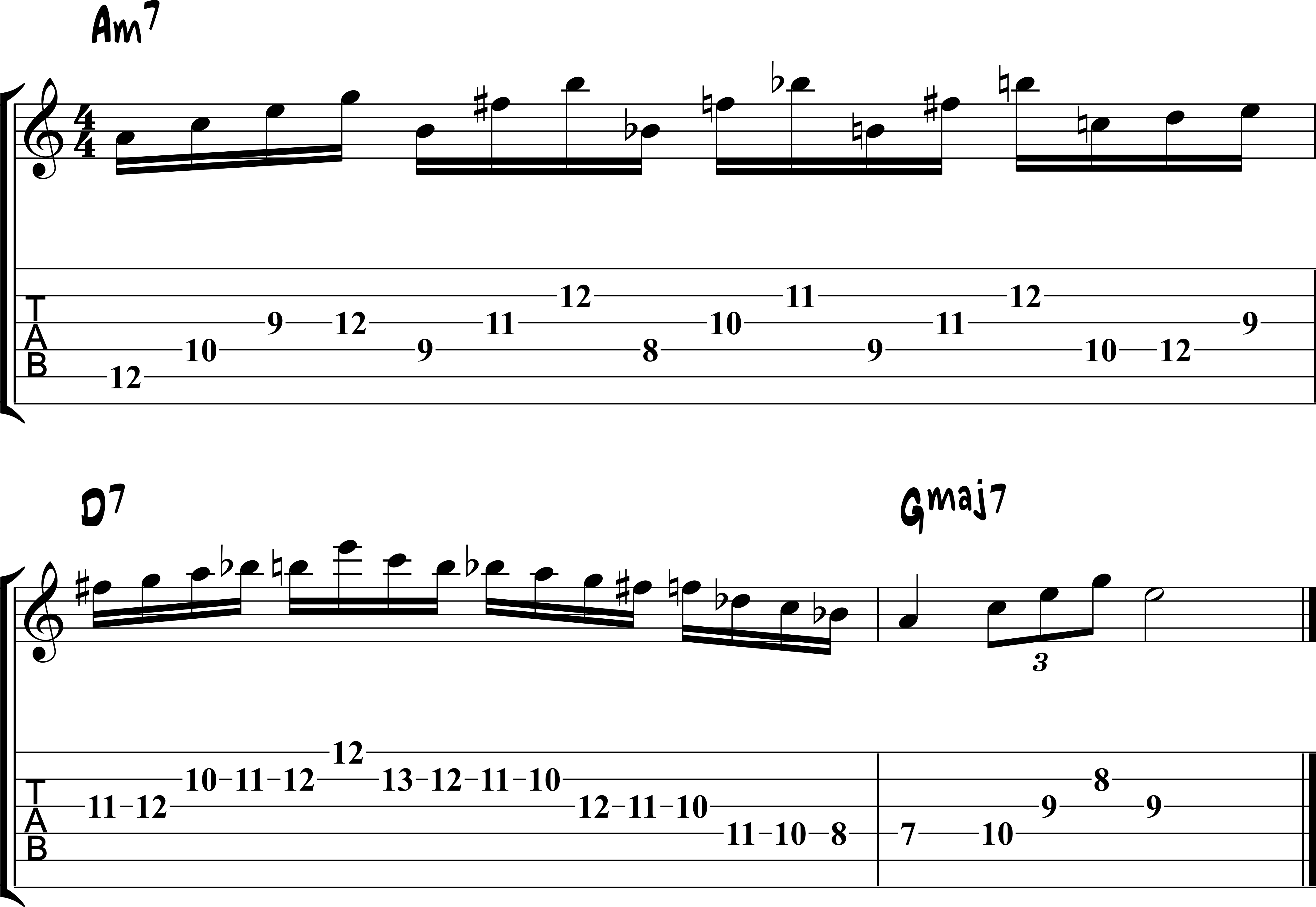3 George Benson Double Time Lines
One of the most popular jazz guitarists of all time, George Benson has all the creative bases covered on his recordings.
Alongside swinging 8th-note runs, one of the areas of George’s playing I enjoy studying are his double-time lines.
By learning Benson’s 16th-note lines, you increase your vocabulary, improve your dexterity, and level up your technique at the same time
George Benson Double Time Line 1
This first line features a technique found in many of Benson’s solos, as well as Pat Martino’s, the use of a repetitive melody line.
Here, G#-A-C are repeated in the first two measures.
Then, the top note changes to a D, then back to C, and finally resolves down to the 3rd of Gmaj7, B.
Repeating notes is an effective way to create energy in your solos, and the moving upper line, C-D-B, is what elevates this line in the repertoire.
Benson Double Time 1

George Benson Double Time Line 2
The first half of the second measure contains C#’s over a D7 chord, which implies an A7 chord, the V7 of D7.
Using a V7 of any chord over that chord to create tension is a concept that Benson uses when playing longer streams of 16th notes.
Also, notice the b9 and b13 in the last beat of the second measure that creates tension.
That tension is then resolved to the tonic chord, Gmaj7.
Applying tension in the last beat of a bar leads the listener into the upcoming chord change.
Benson Double Time 2

George Benson Double Time Line 3
This double time lick contains two very interesting moments.
First, there’s the moving pattern with B-F#-B, down to Bb-F-Bb, and back to the original B-F#-B before moving on in the line.
This moving pattern is called “sidestepping,” and it’s a technique you find in many of Benson’s solos.
The 3-note pattern, played in 16th notes, also creates a slick syncopation that levels up the interest in the line even further.
In the last beat of bar 2, you have a Bbm7 1-2-b3-5 pattern. This tension then resolves into the Imaj7 chord in the next bar, Gmaj7.
This is also an example of sidestepping, as Benson is implying Bbm7-Eb7 here, a sidestep of the original Am7-D7 changes in bars 1-2.
Sidestepping is an essential concept from Benson’s solos, and it’s a concept worth exploring on your fretboard.
Benson Double Time 3

